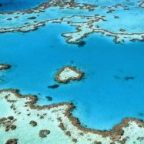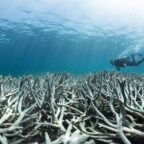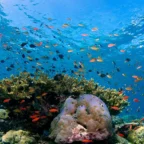
Climate change experts in North and South America are increasingly worried by the potentially devastating implications of higher estimates for possible sea level rises.
The Americas have until now been seen as less vulnerable than other parts of the world like low-lying Pacific islands, Vietnam or Bangladesh.
But the increase in the ranges for anticipated sea level rises presented at a meeting of scientists in Copenhagen in March has alarmed observers in the region.
Parts of the Caribbean, Mexico and Ecuador are seen as most at risk. New York City and southern parts of Florida are also thought to be particularly vulnerable.
The 2007 IPCC (Intergovernmental Panel on Climate Change) report suggested that sea levels would rise by between 19cm (7.5 inches) and 59cm by the end of this century.
But several scientists at the Copenhagen meeting spoke of a rise of a metre or more, even if the world’s greenhouse gas emissions were kept at a low level.
Melting of the polar ice sheets is one of the main drivers behind the new estimates.
“A rise of one metre will irreversibly change the geography of coastal areas in Latin America,” Walter Vergara, the World Bank’s lead engineer on climate change in the region, told the BBC.
“For example, a one-metre rise would flood an area in coastal Guyana where 70% of the population and 40% of agricultural land is located. That would imply a major reorganisation of the country’s economy.”
Mr Vergara and other experts are also concerned about the effect on the large coastal wetlands in the Gulf of Mexico.
“These new data on sea level rises are alarming,” says Arnoldo Matus Kramer, a researcher on climate change adaptation at Oxford University.
“When combined with the exponential growth of urbanisation and tourism along the coast of the Gulf of Mexico and the Mexican Caribbean, it is extremely worrying.”
A November 2008 study by UN-Habitat on the world’s cities pointed out that in most Caribbean island states, 50% of the population lives within 2km (1.2 miles) of the coast. They would be directly affected by sea level rise and other climate impacts.
The Bahamas, the Guyanas, Belize and Jamaica have been pin-pointed by the World Bank as being particularly at risk from a one-metre rise.
The coastal plains around the city of Guayaquil in Ecuador, the country’s main economic hub, are also known to be vulnerable to a combination of sea level rises, storms and sea surges.
A recent study by researchers at Espol, a science institute in Guayaquil, suggested that even a half-metre sea level rise would put the storm drainage system in the southern part of the city under severe strain, possibly causing it to collapse.
Fishing threatened
Ecuador’s lucrative fishing industry, which is a mainstay of the economy, would also be threatened.
“A one-metre sea level rise would add another layer of threat to the shrimp and other fishing industries’, says Espol’s Pilar Cornejo, the author of a UN report on the issue.
According to a recent World Bank study of more than 80 developing countries, Ecuador features among the top 10 countries likely to be most affected by sea level rise when calculated as a percentage of its GDP.
Argentina, Mexico and Jamaica also appear in the top 10 when measured by the impact of a one-metre rise on agricultural lands.
Scientists stress that uncertainties remain about future sea level rises, including the behaviour of the giant polar ice sheets, the time span over which rises will take place, and their interaction with existing coastal conditions.












Social Profiles